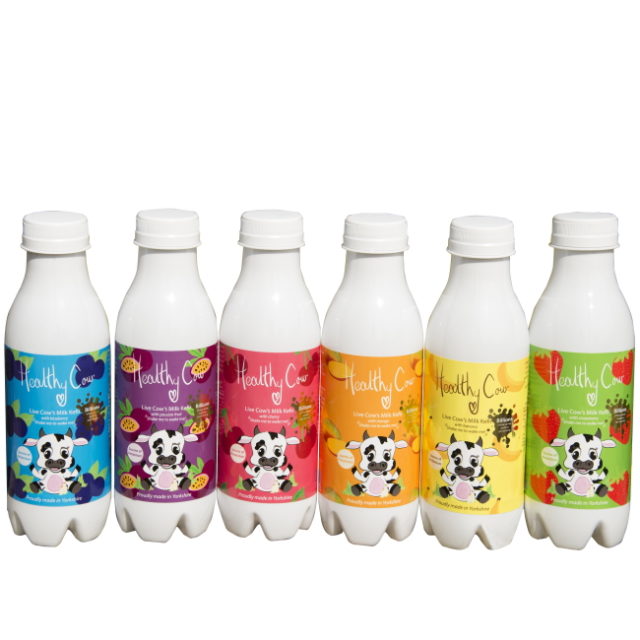
Kefir is a probiotic and includes a combination of yeast and bacteria fermentation. This combination of yeast and bacteria is known as “kefir grain”. The Kefir grains are not common grains like rice or wheat, and they are free from gluten. Kefir grains and milk are mixed and then stored in an area that is warm in order to “culture”, which produces what is known as a kefir beverage.
Probiotics, which are also known as “good bacteria” are types of living organisms that assist with maintaining bowel movements that are regular, support a healthy immune system, and treat certain types of digestive conditions. Most of the health benefits associated with kefir are connected to the probiotic content in these products.
Kefir has a tangy and tart flavor, and the consistency can be compared to drinking yogurt. When the kefir grains undergo fermentation processes, the product may have a slightly carbonated taste.
Considerations and Risks
Kefir is regarded as safe for consumption, however, there are certain factors to consider before you decide to add this product into your daily diet. People that have an intolerance to lactose might be able to consume kefir without suffering from any side-effects, yet people that have allergies to milk should not be drinking kefir products that are combined with milk that comes from cows, as it may result in allergic reactions.
Since kefir is produced from milk, these products do contain sugar. Some of the flavored, pre-packaged kefirs contain sugar in high amounts. Individuals that have diabetes should read the labels carefully and rather stick with the plain varieties that do not contain added sugar. When kefir is made traditionally it might contain alcohol in trace amounts. Most of the commercial brands of culture and kefir bacteria products are alcohol-free.
Side-Effects of Kefir
Even though kefir is associated with several health benefits, there are also a few side effects that it can produce. This usually includes abdominal cramping and constipation. These are the side effects that are more common when a person take kefir for the first time.
Kefir is regarded as safe for adults and children between the ages of 1 and 5. It is still advisable for parents to check with their pediatrician should they have any concerns. Children that are under 1 year of age should not be consuming products that contain dairy.
It is also important to check with a physician before consuming kefir products for those that have AIDS or any other condition that is linked to weakening the immune system. The people that suffer from autoimmune diseases are advised to check with a doctor before they start using kefir. Even though the bacteria and cultures present in kefir are regarded as beneficial for people with normal immune systems, it can exacerbate conditions or increase infections in people that have weak or out-of-balance immune systems.
Kefir is also made using caseins, which is something some people do not include in their diets. If you avoid caseins, it may be a better idea to find another type of probiotic instead.
How to Make Kefir at Home:
- It is possible to make kefir products from home, provided the environment is clean and hygienic.
What You Will Need:
-
- Active kefir grains
- Milk (dairy or plant-based milks)
- Glass jar
- Cheesecloth or a paper filter
- Rubber band
- Wooden spoon or silicone spatula (stay away from any metal utensils when working with kefir)
- Mesh strainer (non-metal)
Directions
Combine the kefir grains (1 teaspoon) into 1 cup of milk in a jar. Cover with a cheesecloth or filter paper and secure in place using your rubber band. Keep the jar in an area that is dry and warm for 12 to 48 hours.
Once the product starts to thicken and has a tart and tangy taste, the kefir should be strained into a non-metal storage container. Store in an airtight container and use within 1 week.
When making your own kefir products it is important to know that exposing the kefir grains to metal might weaken the grains, so stay away from metal containers and utensils. Exposing the product to a temperature above 90 °F, might spoil the milk. Keep your jar out of direct sunlight and keep the strained grains to produce your next batch.
How to Use Kefir
You can use kefir in the same way that yogurt and milk is used. You can either drink it like a beverage or blend it into smoothies, pour it over your cereals or combine with fruit juice. You can also use kefir in salad dressings, dips, baked goods and soups.
Summary
Kefir is regarded as safe and is linked to minimal side effects. The common side effects that people usually experience when using kefir for the first time include abdominal cramping and constipation. It is advisable to first check with a doctor before you use kefir if you suffer from a condition or disease that has weakened your immune system.












